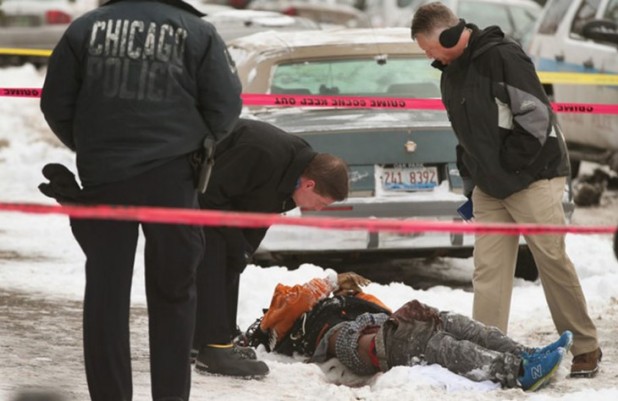The New Observer
March 31, 2016
There have been eight shootings per day in Chicago from January to March 2016, resulting in 135 homicides—an increase of 71 percent over the same period last year.
The statistics, released by the Chicago Police Department, showed that the majority nonwhite city is well on its way to top its previous “record” of 500 homicides for the entire year.
Shootings have also increased dramatically in the city. Some 727 people had been shot in the first three months of 2016—an average of eight per day.
This is a 73 percent increase from the 422 shootings a year earlier, as per data compiled by the Chicago Tribune.
The increase in shootings and homicides in the city has been evident in statistics going back years. The latest increases follow two consecutive years in which shootings rose by double digits, and homicides by 12.5.
The Department added that homicides in March “only” rose by 25 percent from the same year-earlier period.
The department also revealed that more than half of the homicide victims so far this year had been targeted as likely gun violence victims or offenders in a new “program” the city has launched to persuade them to “give up the gang life.”
At a news conference, interim police Superintendent Eddie Johnson said “gang conflicts” and the “proliferation of guns continue to fuel the violence.”
Chicago’s violence levels have outpaced New York and Los Angeles, even though both those cities have larger populations.
According to the most recently available figures, there have been 60 homicides in New York City through March 20, down from 75 in the year-earlier period, while Los Angeles recorded 67 homicides through March 26, up from 54 last year.
At the same time, shooting victims had totaled 202 in New York and 260 in Los Angeles.
The Police Department strictly avoided mentioning race in its reports—although the references to “gangs” revealed all that was necessary.
However, even going by the neighborhoods most affected by the increase in shootings and homicides—the South and West sides—it is also clear that the spiraling crime rate is being driven by the black and Hispanic sections of the 70 percent nonwhite city.
Similarly affected has been the neighboring Austin District on the city’s Far West Side.
The Eisenhower Expressway—which cuts through the middle of the two districts—has long been known as the “the heroin highway” because of the area’s association with the drug trade.
 Daily Stormer The Most Censored Publication in History
Daily Stormer The Most Censored Publication in History



